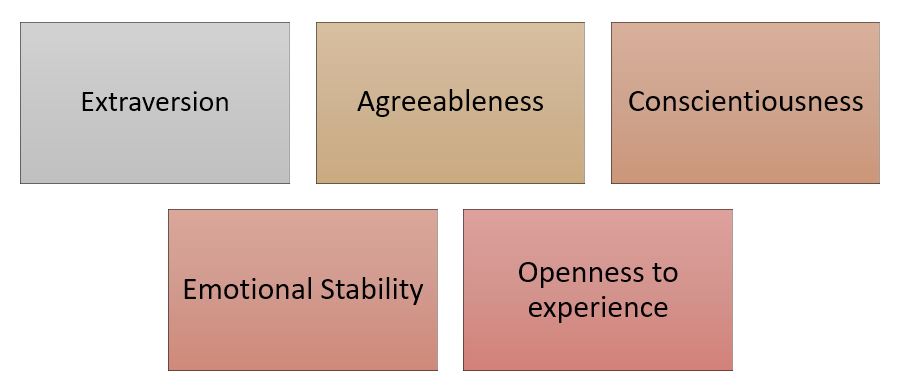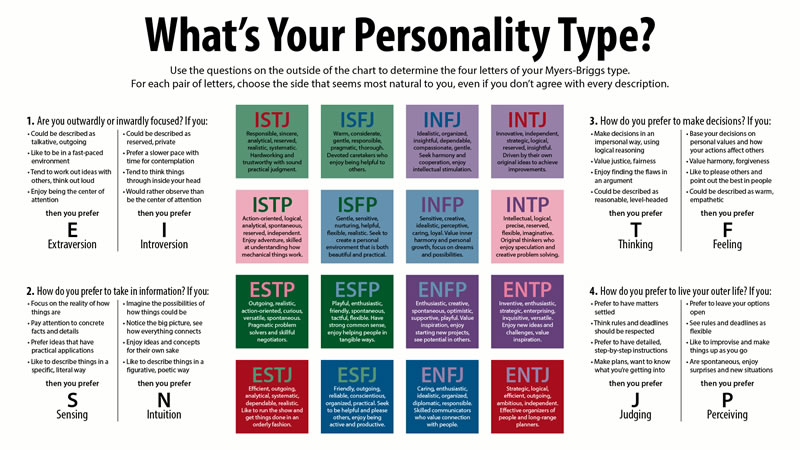Self-Awareness
You've Got Personality!
MINDS ON
Watching this talk might prompt various questions or observations. Think about each question/observation in the interactive below and really take a pause to reflect before clicking to reveal the explanation.
IntrovertExtrovert
 Tips
Tips
 Reflection
Reflection
Based on your knowledge of introverts and extroverts, and your own personal profile, write an opening reflection entry in your Portfolio.
In your reflection, make sure you address the following:
- Are you an introvert or an extrovert, or perhaps a combination of both (i.e. ambivalent)? How do you know? Explain with reference to your personal characteristics and traits.
- What misconceptions do you want to dispel about being an introvert or an extrovert?
- Start to think about types of jobs/careers that might be a better fit for your personality based on whether you are an introvert or an extrovert. Identify three jobs/careers and explain why you feel they might be a good fit.
- How do you think your personal qualities (being more of an introvert or more of an extrovert) will impact how you work with others or how you approach work?
ACTION
Personality
Introversion and extroversion are just two categories of personality traits. There are other ways of characterizing and categorizing personality. Examine the following image:

Researchers have identified a list of five personality traits that are viewed as significant to the workplace. These are known as the Five Big Personality Traits. Think about each of the five traits for a moment:
- Extraversion
- Agreeableness
- Conscientiousness
- Emotional Stability
- Openness to experience
What do each of these traits actually mean? For example, what does it mean to be emotionally stable? What are the characteristics and behaviour of a person who is emotionally stable? ...a person who is not emotionally stable? Additionally, how does that behaviour affect their job performance?
 Personality Traits
Personality Traits
Choose one of the five traits and formulate a discussion response. You will be required to research one of these, considering the following to guide your inquiry and responses:
Consider the following to guide your response:
- Identify the trait you have selected.
- What does the trait actually mean? What is your interpretation of the meaning?
- Can you identify other words or terms that might be used to help describe the trait if you had to explain it to someone else?
- What are the personal characteristics/attitudes/behaviour of someone who possesses that trait?
- What are the personal characteristics/attitudes/behaviour of someone who does not possess that trait?
- Why is that trait an important workplace consideration?
Read the following article, How Your Personality Determines The Right Job Fit from The Doyle Group.
If you want to view any links in this pdf, right click and select "Open Link in New Tab" to avoid leaving this page. (View the original article.)
 Big 5 Personality Traits Mind Map
Big 5 Personality Traits Mind Map
Take a look at the following mind map.

Replicate this mind map and the provide a comment branch for each of the 5 traits. In each comment branch identify a job/career where that personality trait is important and a brief explanation outlining why that trait is important for that job/career.
 Check for Understanding
Check for Understanding
Ensure you have a good grasp on the big 5 personality traits by completing the following drag and drop interactive.
PersonalityTraitsDD
Enrichment
Your previous reading identified yet another popular approach used to understand and categorize personality, the Myers-Briggs Type Indicator. This personality assessment tool was created and developed by Katherine Briggs and her daughter Isabel Briggs-Myers. To learn more about the history and development of the assessment, visit the Myers & Briggs Foundation. A summary is provided in the infographic below. Click on the image to see a larger version.

Read the following article, The Best Jobs For Every Personality Type from Business Insider.
If you want to view any links in this pdf, right click and select "Open Link in New Tab" to avoid leaving this page. (View the original article.)
 Personality Test
Personality Test
Based on your Myers-Briggs indicator category that you identified earlier, examine the suggested jobs/careers that best fit your personality. Make note of the jobs, and if you do not know what that job actually entails, do some quick research of your own.
In addition to what you have already explored in this activity, there are many other forms of personality tests and assessments that exist. Find another personality assessment tool online.
Actually take the test and read the associated results. Create a response which:
- Identifies the name of the test.
- Identifies the direct web link for the test.
- Shares your results and your interpretation of those results.
Read about the personality test that one of your peers investigated.